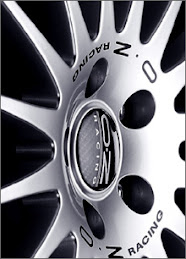Founder Ettore Bugatti was born in Italy, and the automobile company that bears his name was founded in Molsheim, a town in the Alsace region, which was then a part of the German Empire (Alsace became a province under Frederick I and changed hands between France and Germany many times. Alsace was ceded to France in 1918 under the Treaty of Versailles). The company was known for the advanced engineering in its premium road cars and its success in early Grand Prix motor racing, winning the first ever Monaco Grand Prix. The company's success culminated with driver Jean-Pierre Wimille winning the 24 hours of Le Mans twice (in 1937 with Robert Benoist and 1939 with Pierre Veyron).
Bugatti's cars were as much works of art as they were mechanical creations, with hand turned finishes on the engine blocks, and safety wires threaded through almost every fastener in intricately laced patterns. He regarded his arch competitor Bentley's cars as "the world's fastest trucks" for focusing on durability. According to Bugatti, weight was the enemy. Bugatti’s inspiring creations attracted many people from other fields of interest; like Arlen Ness who created a motorcycle, called “Smooth-Ness”, with the Bugatti style. He was inspired by the smoothness of a bronze casting of a Bugatti automobile.
Bugatti's disdain for his customers is as legendary as his devotion to his creations; in one probably apocryphal incident, upon greeting an unhappy customer returning to the factory with "What, you again?", he replied to the subsequent tale of automotive mechanical woe with "Well, see that it does not happen again!" and strode away.
Only a few examples of each of Ettore Bugatti's vehicles were ever produced, the most famous being the Type 35 Grand Prix cars, the "Royale", the Type 57 "Atlantic" and the Type 55 sports car.
Throughout the production run of approximately 7,900 cars (of which about 2,000 still exist), each Bugatti model was designated with the prefix T for Type, which referred to the chassis and drive train.Ettore Bugatti also designed a successful motorised railcar, the Autorail, and an airplane which never flew. His son, Jean Bugatti, was killed on August 11, 1939 at the age of 30, while testing a Type 57 tank-bodied race car near the Molsheim factory. Subsequently the company's fortunes began to decline. World War II ruined the factory in Molsheim, and the company lost control of the property. During the war, Bugatti planned a new factory at Levallois in Paris and designed a series of new cars. Ettore Bugatti died on August 21, 1947.
he company attempted a comeback under Roland Bugatti in the mid-1950s with the mid-engined Type 251 race car. Designed with help from famed Alfa Romeo, Ferrari, and Maserati designer Gioacchino Colombo, the car failed to perform to expectations and the company's attempts at automobile production were halted.
In the 1960s, Virgil Exner designed a Bugatti as part of his "Revival Cars" project. A show version of this car was actually built by Ghia using the last Bugatti Type 101 chassis and was shown at the 1965 Turin Motor Show. Finance was not forthcoming and Exner then turned his attention to a revival of Stutz.
Bugatti continued producing airplane parts and was sold to Hispano-Suiza (another auto maker turned aircraft supplier) in 1963. Snecma took over in 1968, later acquiring Messier. The two were merged to form Messier-Bugatti in 1977.
Italian entrepreneur Romano Artioli acquired the legendary Bugatti name in 1987 and established Bugatti Automobili SpA. The new company built a factory designed by the architect Giampaolo Benedini in Campogalliano, Italy, a town near Modena, home to other performance-car manufacturers De Tomaso, Ferrari, Lamborghini, Pagani and Maserati.
By 1989, the plans for the new Bugatti-revival were presented by Paolo Stanzani and Marcello Gandini, famous designers of the Lamborghini Miura and Countach. The first completed car was labelled the Bugatti EB110 GT, advertised as the most technically advanced supercar ever produced.
From 1992 through 1994, famed racing car designer, Mauro Forghieri, was technical director.
On August 27, 1993, through his holding company, ACBN Holdings S.A. of Luxembourg, Romano Artioli purchased the Lotus car company from General Motors. The acquisition brought together two of the greatest historical names in automotive racing and plans were made for listing the company's shares on international stock exchanges.
Bugatti also presented in 1993 the prototype of a large sedan called the EB 112.
By the time the Bugatti EB110 came to market the North American and European economies were in recession and operations ceased in September of 1995. A model specific to the United States market called the "Bugatti America" was in the preparatory stages when the company closed.
In 1995, the German manufacturer Dauer bought the EB110 license and remaining parts stock to Bugatti in order to produce a dozen Dauer EB110 SS units.
The most famous Bugatti EB110 owner is racing driver Michael Schumacher, 7 times Formula One world champion. Despite later racing for Ferrari, he still retained the Bugatti EB110 he acquired while racing for the Benetton team.





















1 comment:
For a great, readable and really exciting book about the Treaty of Versailles and especially its CONSEQUENCES, DO have a look at my new book, "A Shattered Peace: Vesailles 1919 and the Price We Pay Today" [www.ashatteredpeace.com], available now on Amazon and lots of bookstores !
cheers,
David
Post a Comment